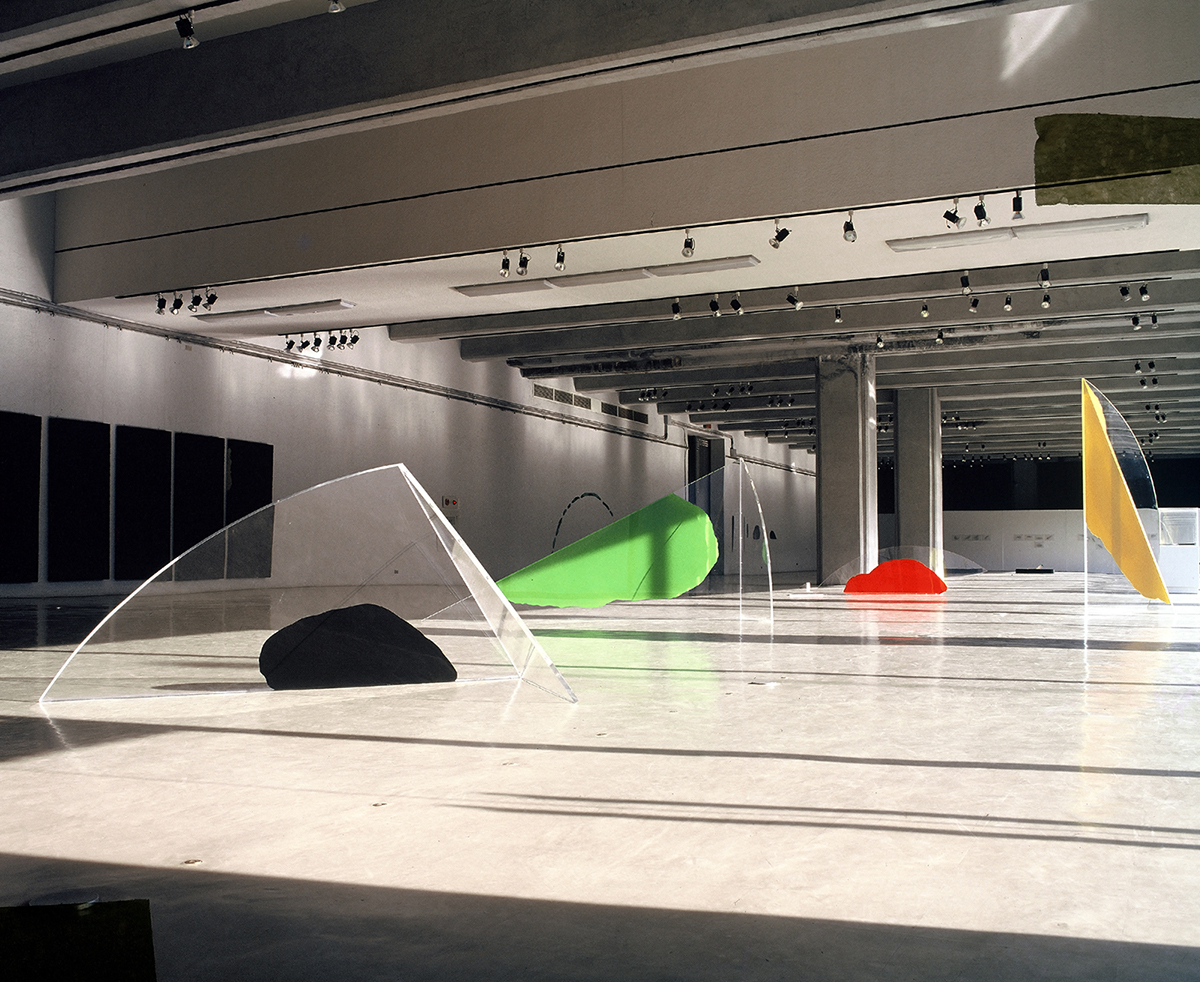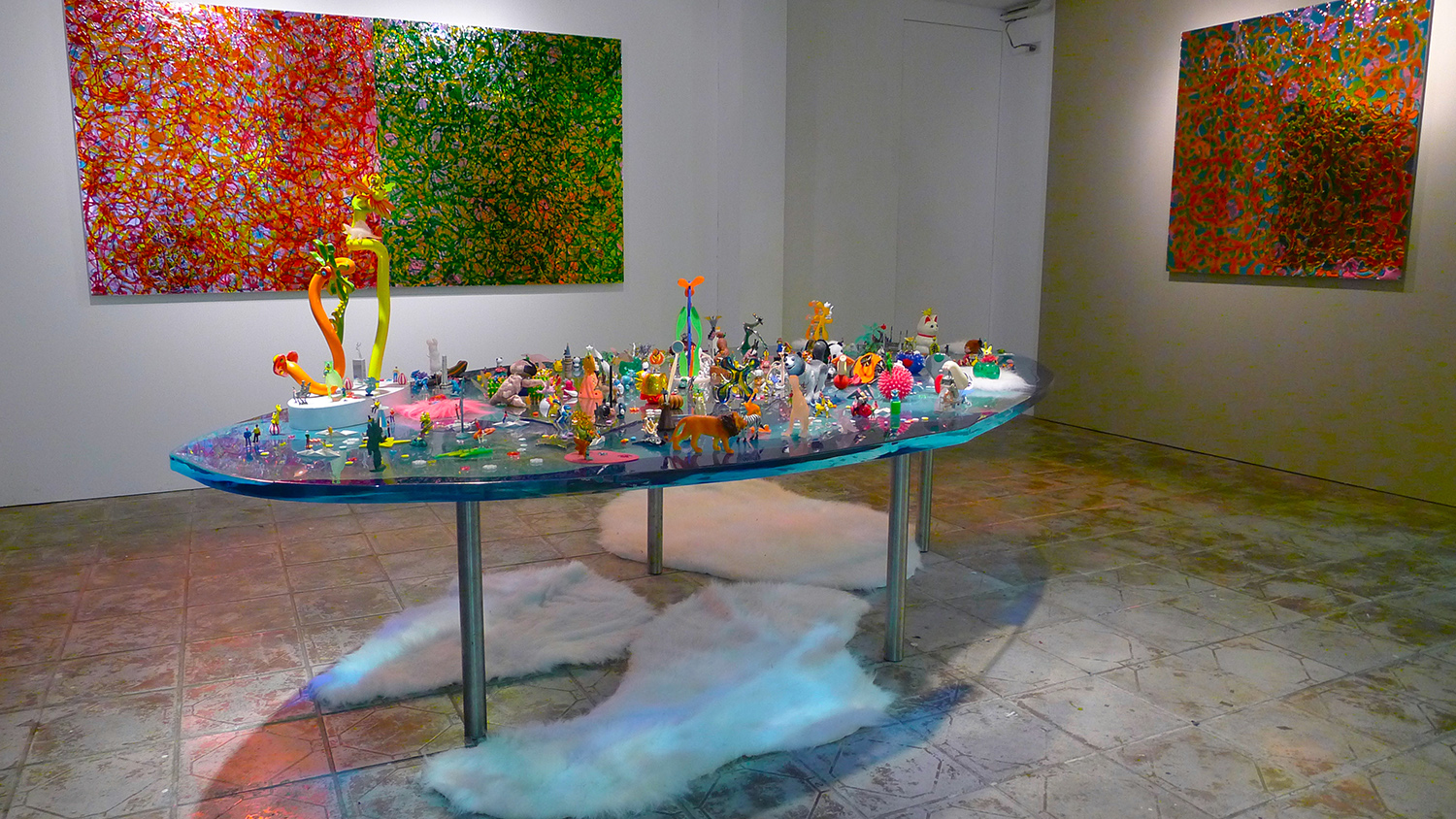People
A World in an Ocean: Interview with Jun T. Lai


In order to celebrate six decades of her life, Taiwanese artist Jun T. Lai first had to install a floor-to-ceiling sheet of steel at the Museum of Contemporary Art (MoCA) in Taipei. Firmly swinging long-handled and short-handled hammers into the sheet, Lai performed Heart-In Between, an endurance ritual that slowly transformed the level surface into a sculpture pitted with dents and curves, sending back a refracted and fragmented image of the artist. The performance, first shown in 2009 at MoCA, was both a treatise to Lai’s decades of work in multiple media, such as performance, painting and sculpture, as well as her ongoing engagements with interaction, transparency and reflection.
When I met the artist in her Taipei studio in late February, a space tucked in an alleyway off a major arterial in the city, she was prepping for the upcoming art fair, Art Central Hong Kong. Lai will be showing two works—including her latest plexiglass sculpture, Shiny Love – Maritime Treasures (2016)—alongside Chien-Hsing Lien and French artist Baptiste Tavernier—at the inaugural participation of Yuan Ru Gallery. Lai explained that international representation of Taiwanese artists was rare and limited; she has displayed her public artworks in cities around the world by submitting proposals. This was the impetus for Ocean Garden (2005), a ceiling strip of colorful glass, plexiglass and steel sculptures situated in Hong Kong’s Tsing Yi MTR station.
In Taiwan, however, Lai has direct access to the natural landscape, which is her arena for discourse and a constant source of inspiration. Woven through her work is the movement and lines of the Pacific Ocean seen from her home in the southeast coastal city of Taitung, an area inhabited by the aboriginal Amis tribe. I spoke to the artist ahead of her upcoming retrospective at the National Taiwan Museum of Fine Arts, which opens in the fall, which will feature reworked installations of Heart-in Between, large-scale plexiglass effigies of dinosaurs and the debut of her largest sculpture to date, a nine-panel colorful glass work.


I heard that before you began experimenting with plexiglass and transparent sculptures, you were a painter. It wasn’t until you exhibited an important sculpture at the Taipei Fine Arts Museum in 1986, that you considered yourself a sculptor, correct?
Yes, I won first prize for this piece, Neither Going Nor Coming (1986)—they were hosting a sculpture competition. I wanted to have more colors and more freedom, like angels flying in the sky. So it’s a freeform sculpture. I looked for a long time for the right material; and I wanted it to be transparent. I used plexiglass because glass is too dangerous, too fragile. This was the first time I used that material. Before that, I was a painter.

From there you experimented more with plexiglass as well as other materials. I couldn’t help but notice this work, Island Sky (2002), in the middle of your studio here. What do the tiny toys and figurines in this work symbolize?
This work [Island Sky] is meant to be the island of Taiwan surrounded by the sea. I put a lot of toys on top of the island, which I’ve collected from different places. Some of them belonged to my nieces when they were young but some are from older generations. The meaning of this is to demonstrate the varying cultures in Taiwan, not just in terms of nationality but also generational.
I wanted to talk about our past and our history. Many artists use this very sad, critical way to talk about our past, but the way I see it is that we cannot change the past. For this work, I provide a telescope so people can see all the tiny details. When you look at the faces of the human figurines, you’ll notice they look very innocent. Very, very innocent. I feel that describes Taiwanese people. We always welcome others. Of course we want to be independent, but we’ve always had problems. When my mother was in high school, China came to take Taiwan; she told me she felt very disappointed. They control everything. The way I see it, that’s our fate, the change. So we can only try and be happy.

Island Sky is part of your ongoing public art series “Youth Melody” (1998– ), for which you’ve grouped all kinds of multimedia works—from colored glass sculptures to giant driftwood installations. What is the root of all these works and what is the “youth melody”?
There is a type of Taiwanese song that talks about youth and dreaming . . . well, actually, I don’t know if “youth” is good translation or not. It’s more like the period of life when one had a lot of dreams. When I was young, this type of song was forbidden [by the government] as it was sung in Taiwanese. That was a long time ago; now it’s changed. But I remember there was a timeslot where you could hear this song on the radio; the DJ would always say “let’s have one song for the youth” or “let’s listen to a youth melody.” This really inspired me to create public art. I wanted to touch the Taiwanese people in the same way, but not in a critical or sad sense. I want to look to the future.
You’ve mentioned that Taitung has been a place of solitude for you, to meditate and reflect on your practice. What in particular strikes you about the place and how is that translated into your work?
In Taitung, every morning at dawn I can see a very strong light reflected from the Pacific Ocean. It is like a big mirror. I feel that the energy that shines from there, do so with love. I wanted to bring this energy into my work, which led me to start this mirror-based series, which includes Shiny Love – Maritime Treasure. For this, I layered transparent plexiglass and colored plexiglass on top of a base mirror. I am always invested in transparency as it is also relates to the environment of the sea, of water.
Ysabelle Cheung is managing editor at ArtAsiaPacific.







